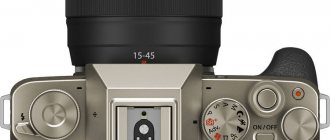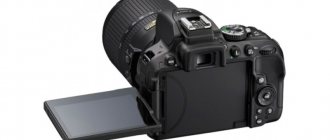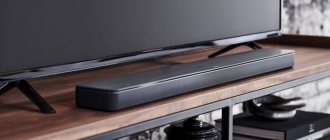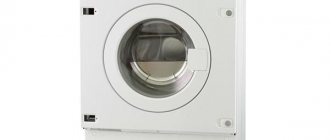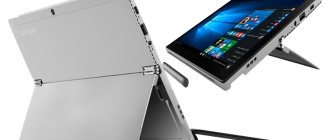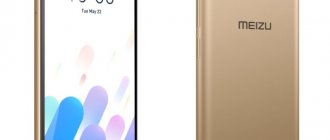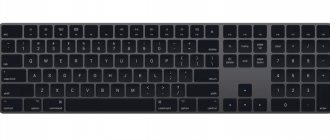| Place | Name | Characteristics in the rating |
| The Best Canon DSLRs for Beginner Photographers |
| 1 | Canon EOS 200D Kit | One of the most compact DSLRs. Balance of cost and capabilities |
| 2 | Canon EOS 80D Kit | The best shooting parameters (25.8 MP matrix) |
| 3 | Canon EOS 1300D Kit | Quick start. Large buffer size in JPEG |
| 4 | Canon EOS 800D Kit | The “golden mean” between the amateur and semi-professional classes. Rotating screen |
| The best Nikon DSLR cameras for beginner photographers |
| 1 | Nikon D5300 Body | The best budget DSLR camera |
| 2 | Nikon D3500 Kit | The best "friendly" camera for a beginner. Powerful battery |
| 3 | Nikon D7200 Body | Time-lapse video function. Magnesium dust and waterproof housing |
| 4 | Nikon D610 Body | Full frame 24 MP sensor. Two slots for SD memory cards |
| The best DSLR cameras from other brands for beginner photographers |
| 1 | Pentax K-70 Kit | Better image clarity. Pixel Shift Resolution Technology |
| 2 | Pentax KP Kit | Thoughtful personalization with interchangeable overlays. High light sensitivity |
| 3 | Sony Alpha ILCA-68 Kit | Best shooting quality |
| The best mirrorless camera for beginner photographers |
| 1 | Sony Alpha ILCE-6000 Kit | 4D autofocus Shooting speed. "Open" mount |
| 2 | Canon EOS M50 Kit | The best set of characteristics. Entry-level mirrorless camera with 4K video recording |
| 3 | Fujifilm X-T100 Kit | Original retro design. Diopter adjustment |
| 4 | Olympus OM-D E-M10 Mark III Kit | Advanced Photo – a block of programs for technically complex photographs |
Expensive or high quality
At first glance, the price of cameras seems too high. But let us remember the age-old wisdom: the miser pays twice. If you can give a child an unassuming compact, then with age, if you have an interest in photography, it is better not to crawl up the price ladder at each step. You can buy a good camera on credit, it will last for a long time, then you can buy additional lenses.
When choosing a camera, remember that the quality of shooting is ensured by the matrix: the larger the pixel, the more noise there will be in the frame. An option for beginners and advanced is Full-Frame matrices, the size of which exactly corresponds to regular 24 by 36 mm photographic film. Technologies allow you to adjust the sensitivity of the matrix; with film this was impossible.
This will last a long time for beginning whale photographers. With the advent of experience, you can gradually assemble your fleet of lenses needed for specific interests, hone your skills, surprise and delight with your photographs this beautiful world, full of colors and amazing scenes.
Which camera is better to choose?
We recommend that novice photographers pay attention to the following models:
The cheapest camera with a removable lens
Canon EOS 4000D Kit black 18-55mm f/3.5-5.6 DC III Cost: from 18,770 rubles.
This is a DSLR camera with all the disadvantages of budget devices of this type. There is Wi-Fi and proprietary applications for controlling the device from a smartphone. If you are choosing your first camera, then this device is for you. You will be shocked by the quality of the pictures, even if you have previously used a smartphone for 100,000 rubles.
This camera is the cheapest one with an interchangeable lens (included). The manufacturer saved on almost everything in this device: made the bayonet mount plastic, removed the separate power button and inserted the old USB connector. And where there was no opportunity to save money, I simply threw out part of the function so that the user would buy only branded accessories.
This model is not suitable for video shooting, because... There is no microphone jack and focus tracking during recording. But for the money this is the best solution. The closest “classmate” 2000D costs almost 10 thousand more.
The cheapest camera for shooting video
Fujifilm X-A5 Kit 15-45mm Cost: from 29,990 rubles.
A mirrorless camera with all the “charms” of such devices, but also with certain advantages in the form of hybrid, and not just contrast autofocus.
Thanks to the phase focus sensors on the sensor, autofocus is faster, but still slower compared to DSLRs at the same price. The undoubted advantage of this solution is working autofocus during video recording. Videos are recorded in FullHD at 60 fps and 4K at 15 fps. This is, of course, not enough for video, but from such recordings you can extract individual photographs with the appropriate resolution.
There is also a microphone jack and a rotating touch display. Bluetooth and Wi-Fi are used to communicate with the camera. Lens with electronic zoom and optical stabilization. This solution is suitable for those who plan to shoot video.
The cheapest camera with stabilization
Olympus OM-D E-M10 Mark II Kit 14-42 EZ or R Cost: from 28,990 rubles.
Mirrorless camera with OLED viewfinder and diopter correction. Stabilization is carried out by a movable matrix along 5 axes. Autofocus, unfortunately, is only contrast. There is an electronic shutter function. CROP factor 2 (2 times less than the full frame). The microphone cannot be connected separately; it shoots video in FullHD at 60 fps. Otherwise, everything is normal: Wi-FI, a rotating touch screen and other attributes and features of modern cameras (such as Slow motion and various intelligent modes) are present. Sold in different lens configurations. In this case - R and EZ. The first is larger and has manual zoom, and the second is compact and has electronic zoom.
The cheapest DSLR camera for shooting 4K video
Canon EOS 250D Kit 18-55mm IS STM Cost: from 37,900 rubles.
The cheapest SLR camera with the ability to record video in 4K format at 25 fps, has a connector for an external microphone, a rotating touch screen, Wi-Fi and Bluetooth for connection. There is also a viewfinder with diopter correction.
The main feature is Dual Pixel CMOS AF, a technology that eliminates the disadvantages of a classic DSLR camera when shooting video or taking photos through the display. The manufacturer has made pixels on the matrix that perform the function of phase detection autofocus, making 3975 points available for manual focus selection in Live View mode on the LCD screen.
Overall, this is a very decent “Kit” at a very affordable price, but not without a flaw - there is no stabilization here. You'll have to buy the lens yourself.
Arguments in favor of the camera
Even without delving into the essence of photography, you can easily explain the advantages of a camera over a smartphone, including its newest versions.
Detailing
The image quality depends on the matrix: the larger it is, the more light it receives. With the same number of pixels per mm2, the smartphone will have fewer of these millimeters, therefore, it will collect less light. A matrix of normal dimensions (for example, 23.5 by 15.6 mm, as in an average mirrorless camera) cannot be installed in a phone. As a result, the photo will lose in color and contrast, which is imperceptible on a small smart screen, but noticeable on a computer monitor.
Another disadvantage of a small matrix is the lens design. You can control this “physics” of the image only with a large matrix; on a phone, compensation at the software level produces a fake image quality.
Color rendition
A quality indicator is when there is a transfer of shades and halftones. On a small matrix, pixel dots are densely placed, color rays are mixed, and tonal transitions cease to display the real color image. High-quality color rendition is an important advantage of cameras over mobile phones with cameras. Example below: The left part was shot with a smartphone, the right part with a DSLR:
The sense of space, colors, small details look a little flat on a smartphone, the reason is the matrix and the quality of the optics. On cameras, three-dimensionality and the drawing of the foreground and background look more interesting, thanks to a greater number of shades, the delicacy of the image, and a wide range of colors. Filters for color rendering are more varied.
Shooting in low light
Here, not a single mobile phone can compete with the camera. Indoors, in the evening, on a snowy slope - the automatic setting will produce a narrow range of color rendering of white and gray. Neither a flash, nor two lenses, nor a CMOS sensor will solve the problem of high-quality light transmission in a smartphone. The camera, which has a high sensor sensitivity, can easily take pictures in poor lighting, both in the dark (night) and in the light (snow).
Settings
Smart films usually shoot in automatic mode. The camera allows for creativity and manual adjustment of settings. Moreover, they are all located conveniently, close, there is no need to rummage through the menu to set up each next series of pictures.
Additional optics
Any photographer knows that a lot depends on the lens. The smartphone has limitations in terms of optics: there is no possibility of installing multiple lenses or an interchangeable lens, it is built-in. Cameras that have interchangeable lenses with wide apertures, use zoom lenses, and filters are simply out of competition with mobile phones.
On your phone you can also zoom in on the image, but this will not be a zoom, but a stretching of the image, which reduces the quality of the image. The so-called interchangeable lenses for smartphones (macro, fish-eye, etc.) are overlays for creating optical effects.
Shooting in motion
The phone has stabilization for shooting sports competitions, animals, and moving objects, but it doesn’t always work the way the photographer needs. In cameras with electronic shutters, shutter speeds are ultra-short, preventing a moving person from being “smeared” across the frame.
The cameras also have autofocus, which is adjusted to a specific photo shoot, and tracking autofocus. Therefore, you won’t be able to enlarge, print and hang on the wall a photo of running children taken on your phone, but a frame taken with a camera can easily become a painting.
Filters
They are present in both devices under study. But in digital, these effects delicately work with light, maintaining high-quality tone and organic saturation.
Camera or smartphone
Of course, it’s not worth saying that a smartphone camera is generally not suitable for photography. This additional feature will help you take selfies from unusual angles. You can use your phone to take unstaged shots when a person is not preparing or posing (seeing the lens, they usually start to depict something, losing naturalness).
You can take a test photo of an object or landscape on your phone, so that you can return with a camera for a high-quality photo. The quality of a smartphone is also enough if the photos are posted on Instagram. Until recently, the priority in terms of speed of uploading photos was the phone; now cameras have Wi-Fi modules, and the pictures instantly appear on the mobile device.
As a result, experts and photography specialists agreed that shooting with a smartphone corresponds to a note in a notebook so as not to forget an event or a story. A camera is creativity, inspiration, development of skills, the most important thing is to trust only it. Those in whom the artist lies dormant, carefully read the further recommendations on purchasing a good device.
